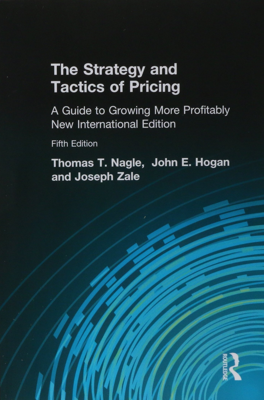Financial Analysis
Financial Analysis and Pricing for Profit
This chapter explores how financial managers and marketing teams often face conflicting goals when setting prices—the former focusing on covering costs to achieve profit objectives, and the latter on setting competitive prices to achieve sales volumes. The synthesis of these internal and external considerations is crucial but challenging.
A profound insight is laid out that typical pricing compromises, which merely split the difference between cost-based and market-based pricing, are flawed. Instead, strategic pricing should integrate detailed knowledge of cost structures with an understanding of the market dynamics affecting customers’ price sensitivities. This integrated approach moves beyond seeing costs as merely thresholds below which prices cannot go, considering them as essential to a broader strategic mission of value creation and customer satisfaction.
Incremental Break-Even Analysis: This concept is introduced as a core tool for understanding the financial impacts of pricing decisions. Unlike traditional break-even analysis, which often evaluates investments in isolation, this method requires understanding how changes in price affect overall profits by looking at potential changes in sales volumes due to price alterations.
Examples and Problems: Throughout the chapter, practical computations using incremental break-even analysis are detailed through the fictional case of Westside Manufacturing, illustrating how to apply these concepts practically. The narrative helps expose the reader to potential scenarios like price cuts or increases and their subsequent effects on volume and profitability.
Key Formulas and Scenarios: The chapter provides formulas and graphical representations to determine the necessary sales volume changes to maintain profitability after pricing adjustments. These tools help in visually appreciating the financial trade-offs involved in different pricing strategies and the detailed impacts of small changes in price or cost.
Reactive vs. Proactive Pricing Decisions: The discussion extends into reactive pricing changes—adjustments made in response to competitors' actions. This segment emphasizes the strategic importance of understanding both market-driven pricing and cost-driven considerations, recommending the synthesis of these approaches to maintain competitive advantage without eroding profit margins.
The text also covers complex scenarios where multiple changes in pricing and cost conditions interact, complicating the decision-making process. Various practical examples are intertwined to show how adjustments in pricing can necessitate corresponding changes in production capabilities, costs, and overall corporate strategy.
Conclusion and Practical Application: By discussing the fictional Westside Manufacturing and other hypothetical business scenarios, the chapter emphasizes the real-world application and consequences of strategic pricing decisions. These examples illustrate not just theoretical models but also practical strategies, urging managers to critically analyze and integrate cost and market data to optimize pricing strategies effectively.
This theoretical foundation and practical guidance provide crucial insights for businesses aiming to refine their pricing strategies to better match market dynamics and internal financial goals.
